Come start the new year with a beer! And of course a side cup of knowledge…
When: Thursday, January 17, 2019 (Doors open at 6:00pm, talks start at 7:00pm)
Where: WURST (2437 4 St SW)
Tickets: $10 plus fees, SOLD OUT – Waitlist is online here
This is an 18+ event.
SPEAKERS
Sweet Leaf or Reefer Madness: is cannabis pain medicine?
Lori Montgomery, Clinical Associate Professor, Cumming School of Medicine, University of Calgary
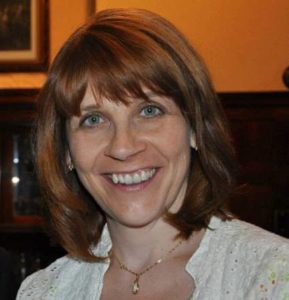
Lori Montgomery
Most people have a strong feeling about cannabis one way or the other — but what does the science tell us about its use as a pain medication? We’ll take a quick tour of the literature and try to find our way through the haze of claims for cannabis as a cure-all or the source of all evil.
Malled: Deciphering Shopping in Canada
Kit Dobson, Associate Professor Department of English, Languages, and Cultures, Mount Royal University
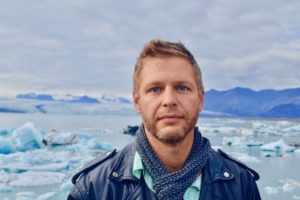 Kit Dobson
Kit Dobson
Generally Kit Dobson hates malls. But he is fascinated by them, by their place in our society, by how we interact with them and how they end up in our books, movies and art. Over the last five-plus years, Kit has traveled across Canada’s malls and shopping spaces in order to try and understand them and the cultures that they help to create. From Chinook Centre in Calgary to the underground malls of Montreal and even up to the famous Walmart in Whitehorse, he looks at our culture of consumerism, and how malls are both shaped by their location and shape the cultures around them.
Extreme pregnancy: A case report of a pregnant native highlander trekking to Everest Base Camp (5300m)
Trevor Day, Associate Professor of Physiology, Mount Royal University

Photo Credit: Ken Imrie of Glass Beach Studios
Over 40,000 people per year trek to Everest base camp (EBC), located at 5300m above sea level in the Nepal Himalaya range, home to some of the biggest mountain in the world. Ascending to high altitude is a profound stressor for native lowlanders due to reductions in available oxygen, leading to risk of acute mountain sickness. Native highlanders have evolved many physiological mechanisms to allow them to live, work and reproduce at altitudes that would be dangerous for lowlanders. In 2016, Dr. Day organized an expedition to EBC, where one of their Sherpa Guides was seven months pregnant. This pregnant guide ascended from 3400m, higher than most mountains around Canmore/Banff, to 5300m, where there is half the oxygen of sea level. On average during ascent, she performed ~5 hours of moderate-to-vigorous physical activity per day, while the recommendations of pregnant lowlanders is half of that per week! This remarkable demonstration of the superimposition of native highlander physiology, high altitude physiology, pregnancy physiology and exercise pushes the boundaries of what we know is humanly possible!
Come join us for the last Nerd Nite of 2018!
When: Thursday, November 15, 2018 (Doors open at 6:00pm, talks start at 7:00pm)
Where: WURST (2437 4 St SW)
Tickets: SOLD OUT, waitlist here
This is an 18+ event.
SPEAKERS
Why Us?! Backlash against Public Health Advertising Targeting Minorities
 Leah Hamilton, Associate Professor of Management and Human Resources, Mount Royal University
Leah Hamilton, Associate Professor of Management and Human Resources, Mount Royal University
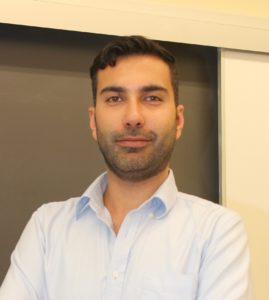 Mohammed El Hazzouri, Associate Professor of Marketing, Mount Royal University
Mohammed El Hazzouri, Associate Professor of Marketing, Mount Royal University
Public Health agencies often feature minority models in their advertising in an effort to persuade the featured minority groups to take on the health behaviors promoted by the advertisements. For many years, health communications experts assumed that these targeted methods were always effective. In our research, we show that this practice can create a backlash effect where minorities feel negatively stereotyped by such advertising. In our talk, we will present the results of four studies documenting this backlash effect. We will also discuss the directions of our future research on the topic.
“Won’t Somebody Think of the Children?”
Examining COPPA Compliance at Scale
Joel Reardon, University of Calgary
What’s happening behind the scenes when we run an app. It turns out a great number of ads and analytics companies are given access to sensitive data and frequently the only restraint is the technical limitations of the device itself. We build an automated system to run android apps and observe how they process and exfiltrate user data. We focus on a subset of children’s games in particular and find many potential violations of the U.S.’s COPPA law.
If you aren’t napping or stuck staring at your own hands, come join us for some education and beers! It’s the day after cannabis legalization and we have the munchies for knowledge.
Also! If you are so inclined and in the Halloween spirit, come dressed in your niftiest costume. There will be at least one other nerd dressed up with you, I promise.
When: Thursday, October 18, 2018 (Doors open at 6:00pm, talks start at 7:00pm)
Where: WURST (2437 4 St SW)
Tickets: Sold out, waitlist here
This is an 18+ event.
SPEAKERS
Into the Weeds of Cannabis Regulation: 10 Things You Need to Know
Lorian Hardcastle, Assistant Professor in the Faculty of Law and Cumming School of Medicine at the University of Calgary

Lorian Hardcastle
This presentation will take you on a whirlwind tour of the new rules on cannabis, including who can purchase it, how much can be grown at home, where it can be purchased, where it can be consumed, and what products can be purchased. It will also provide key information for different stakeholder groups, including tenants, employees, drivers, and medical users.
Fake it till you make it? Understanding Faking Behavior and Perceptions in Job Interviews
Josh Bourdage, Associate Professor, Department of Psychology, University of Calgary
Tim Wingate, PhD Student, Department of Psychology, University of Calgary
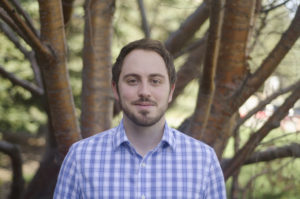 Josh Bourdage
Josh Bourdage
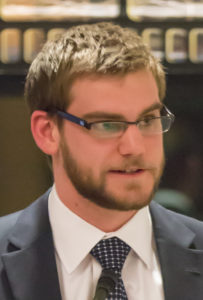 Tim Wingate
Tim Wingate
Job interviews are used nearly universally as a way to hire people for jobs. Ideally, companies want to be able to pick the best people who will be the best fit for the job and the company. From the applicant side, the interviewee is looking for an edge and typically trying to do their best to land the job. One prominent aspect of the interview is applicant faking during the interview, with many applicants faking to try and get the job, and interviewers using their perceptions of faking to guide their evaluations of the applicant. In this talk, we discuss the ways that applicants fake, how prevalent this behavior is, who and when people are most likely to fake, and the factors that impact whether an interviewer detects or perceives faking.
What really annoys me about dinosaurs in the movies
Donald Henderson, Curator of Dinosaurs, Royal Tyrrell Museum of Palaeontology
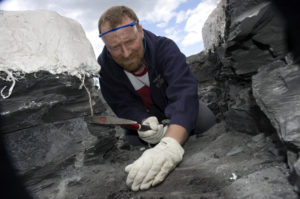 Donald Henderson
Donald Henderson
Dinosaurs have featured in animated films and motion pictures almost from the beginning of the art forms, and have proven to be consistent box office winners. However, despite our exponential increase in our knowledge of dinosaurs over the past 50 years, film makers and animators regularly go far outside biological and physical reality when presenting these animals (and other extinct beasts). I will highlight the top five of my many gripes about how dinosaurs and other prehistoric creatures are presented in movies, and give the reasons why the portrayals are just not plausible (and make me cringe).
Road Closures and Parking Constraints... all for a good nerdy cause!
We were given a heads-up that there may be some road closures around Wurst for Nerd Nite due to… Beakerhead! Four to Six will be happening on 4 St from 23 Ave down to 26 Ave (Wurst is right in the middle of that zone). There will be a bunch of nerdy, sciencey, goodness happening around Wurst so feel free to come early to check it out. Also keep in mind parking issues, etc. in the area. Four to Six will be happening Wed, Thur, and Friday (Sept 19-21) from, you guessed it, 4pm to 6pm.
The first Nerd Nite of the season is coming up quick! What better way to start the new school year than with a bit of learning and drinking?
When: Thursday, September 20, 2018 (Doors open at 6:00pm, talks start at 7:00pm)
Where: WURST (2437 4 St SW)
Tickets: Sold out, waitlist here
This is an 18+ event.
SPEAKERS
Octopuses are the real chameleons
Jennifer Mather, Ph.D., University of Lethbridge
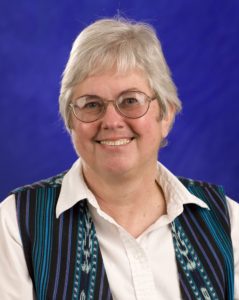
Octopuses are the real chameleons. They can look like anything they want to, and they have a whole skin chromatophore system to do this. Mostly they want not to be seen, blending into the background with colours, textures and postures to match. Sometimes they want to be seen, they can startle you away by changing how they look really fast. Some of them can put blue warning circles on their skin; good thing, as they are deadly poisonous. Once in a while they can use the skin patterns to signal their sex to each other, mostly it’s probably chemical cues. Best of all, they are colour blind, so they can’t see what they produce. How do they do that, and why? I’ll speculate.
Exploration of Canada’s Deepest Cave
Katie Graham, Cave Explorer and Expedition Leader
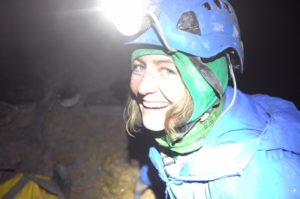
An overview of the discovery of Bisaro Anima cave and the exploration that has proven it to be Canada’s deepest cave.
Transport Planning / ELA
Andrew Sedor, Business Development Coordinator in Transportation at the City of Calgary
Dan Fox, Leader of The City’s Electric Vehicle Strategy
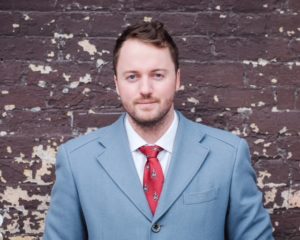 Andrew Sedor
Andrew Sedor
New transportation technology helps shape cities. For over 100 years, Calgary and cities across the globe have been shaped by the automobile. Planning transportation around the automobile has allowed people to live further away from their work and gave rise to most of the urban form in the modern world. New transportation technologies are expected to continue to change cities.
Over the past decade, increased computing power, smart phones and technological discoveries have enabled the development of technologies that were once in the realm of science fiction. While cities cannot predict the future, there are major technological and social trends occurring in transportation. Autonomy, electrification, connectivity and shared mobility are predicted to impact transportation over the upcoming decades.
Andrew Sedor, from The City of Calgary Transportation Department, will be talking about how these future technologies may impact cities, and what the City of Calgary is doing to prepare. Andrew is currently leading one of Canada’s first autonomous vehicle pilots, and is leading the City’s living labs initiative.
Come join us at WURST for our last Nerd Nite of the season! This Season Finale is sure to be a cliff hanger…
When: Thursday, June 14th , 2018
Where: WURST (2437 4 St SW)
Tickets: Sold out! Wait list here
This is an 18+ event.
SPEAKERS
Everything you never knew you wanted to know about radon, gas, radiation and you
Dr. Aaron Goodarzi, University of Calgary, Canada Research Chair for Radiation Exposure Disease
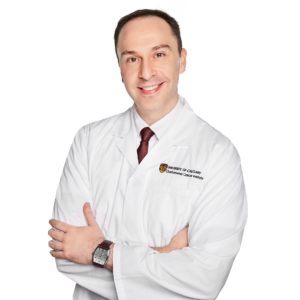
Most of us have learned a degree of ‘fear’ surrounding (ionizing) radiation and the diseases connected to exposure, typically from popular culture, more spectacular historical events or word of mouth. However, exactly *why* we should be concerned, and also the surprising nature of the radiation sources that we should and also should not be worried about, is often missed from this conversation. In this evenings talk, you will learn the answers to all of these questions, as well as how scientists are figuring out who are the hidden superheroes amongst us, how studying the air of basements can help us colonize space and why working in a nuclear power plant can sometimes save your life.
Colours of the Brain
Dave Siever, CEO of Mind Alive Inc.
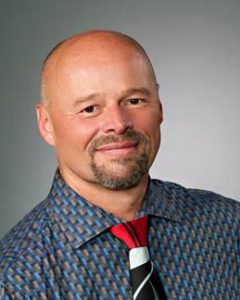
Once upon a time EEGs could only show squiggly lines that a researcher or clinician “oohed and aahed” at, not knowing quite what to make of these elusive & exciting brain wave events. However, with the advent of the quantification of brain wave activity over time, computer algorithms allowed researchers and clinicians to view beautiful and colorful images of brain activity that goes far beyond what can be gleaned from squiggly lines. This technique is termed quantified EEG or qEEG. QEEG enables us the ability to identify and treat a wide variety of brain/behavioral conditions including depression, several types of anxiety, OCD, ADD, ADHD, dementia, brain injuries from hits to the head, viral infections, strokes and more.
The Chemistry of the World’s Smallest Sponges
George Shimizu, University of Calgary. Co-Founder, ZoraMat Solutions Inc.
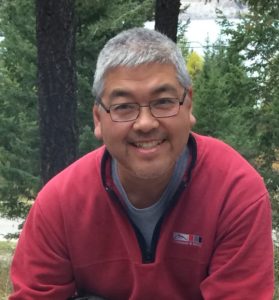
Many global challenges, from desalinating water to reducing greenhouse gas emissions, come down to bringing about some form of separation in an energy efficient manner. Our research concerns making new solid materials with regular pores and channels on the nanometer scale. On this scale, the cavities are on the order of individual molecules and the ability to separate targets becomes very selective. In this talk I will present some of the techniques we use to prove the structure of materials and how they work followed by some of the global challenges where a better means of separating molecules is needed. Finally, I will mention some of our very successful work on using these little molecular sponges to selectively and efficiently remove carbon dioxide from gas streams.














